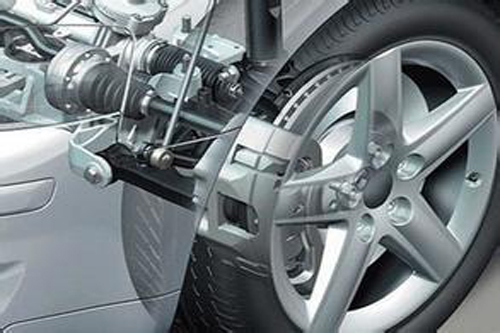The vehicle must be able to stop while it is able to start driving. To stop the vehicle, you have to rely on the braking system on the vehicle because you do not have the specific function of teaching. Regarding the brake system, we all know that there are three electronic safety systems such as automatic braking, braking priority, and brake assistance. However, we only know that most of us are silly and unclear.

Automatic brake
Automatic braking, as the name suggests, is the normal driving of the vehicle in the case of non-adaptive cruising. If the vehicle encounters an unexpected dangerous situation, it can actively generate braking effects to allow the vehicle to slow down, thereby improving the driving safety. It can help drivers avoid rear-end accidents common to low-speed traffic in urban traffic and avoid unnecessary losses.
According to relevant data, 75% of rear-end collisions occurred at a speed of about 30km/h, and the current Volvo's latest urban safety system has been able to achieve complete braking at a speed of 35km/h, provided that the speed is To be greater than 10km/h.
Brake priority
Brake priority refers to the system that allows the driver to stop the car by depressing the brake pedal when the accelerator is depressed. That is, the brake priority system automatically detects that the driver is not successful in attempting braking. Switch engine operation to idle.
This system is not as practical as the safety configuration such as ESP and automatic braking. In theory, the brake priority system helps to shorten the braking distance at ordinary times, but the actual effect is not obvious. It can even be understood that the shortened braking distance cannot play a role in the event of an accident.
Brake assist
The brake assist system can determine the brake pedal's movement through the sensor when the car is braking, and increase the braking force during emergency braking, thus shortening the braking distance. When the driver's leg or foot strength is insufficient, or the system determines that the current strength cannot achieve a safe braking effect, the system will increase the braking force to a maximum in less than 1 second to make the vehicle timely and effective. The brakes are completed.
According to relevant information, the brake is applied when the speed exceeds 120km/h, and the system can reduce the braking distance by 10m. When the vehicle speed is 200km/h, it is less than 21m shorter than the vehicle without the system. This distance is enough to keep people's lives and property in dangerous situations.
However, the brake assist system requires a very high recognition capability of the sensor, and in some extreme cases, it will involve erroneous intervention. It may be that the driver presses the pedal lightly to take the normal brake and maintain the distance. As a result, the brake assist system mistakenly assumes that an emergency brake is needed to intervene in the brake. The severity of the consequences is therefore inestimable.
Editor's Note: Today, most models are equipped with a safety brake system, but this is not the reason behind safe driving and traffic regulations. Once the vehicle exceeds the control limit, even if there is a safety system, it is not necessarily useful, so it is most important to properly view the vehicle configuration and maintain a good driving mentality.
Tyre Recycling Machine manufactured by Yilong Machinery, can creat 40-45% oil, creat huge profit for worldwide customers, 10 years experience served 1000+ customers,can customized according customer requirement, provide Tire Shredder Tire Recycling Machine, Waste Tire Recycling Machine convert solid waste to be fuel oil, help a lot of domestic economical developing.
Tyre Recycling Machine
Tire Recycling Equipment,Tire Recycling Machine,Tire Shredder Tire Recycling Machine,Waste Tire Recycling Machine
Shangqiu Zhongming Eco-Friendly Equipment Co., Ltd. , https://www.sqzhongminggroup.com
